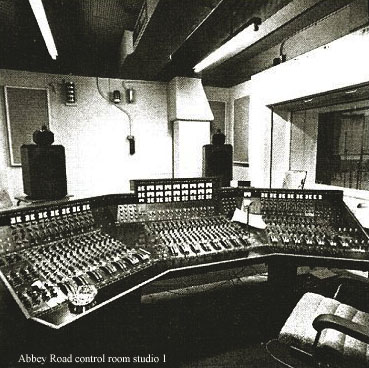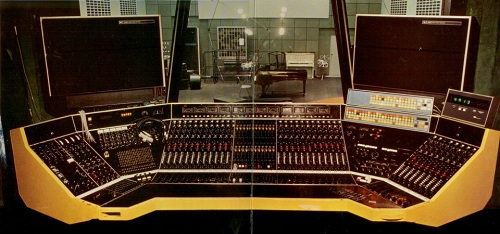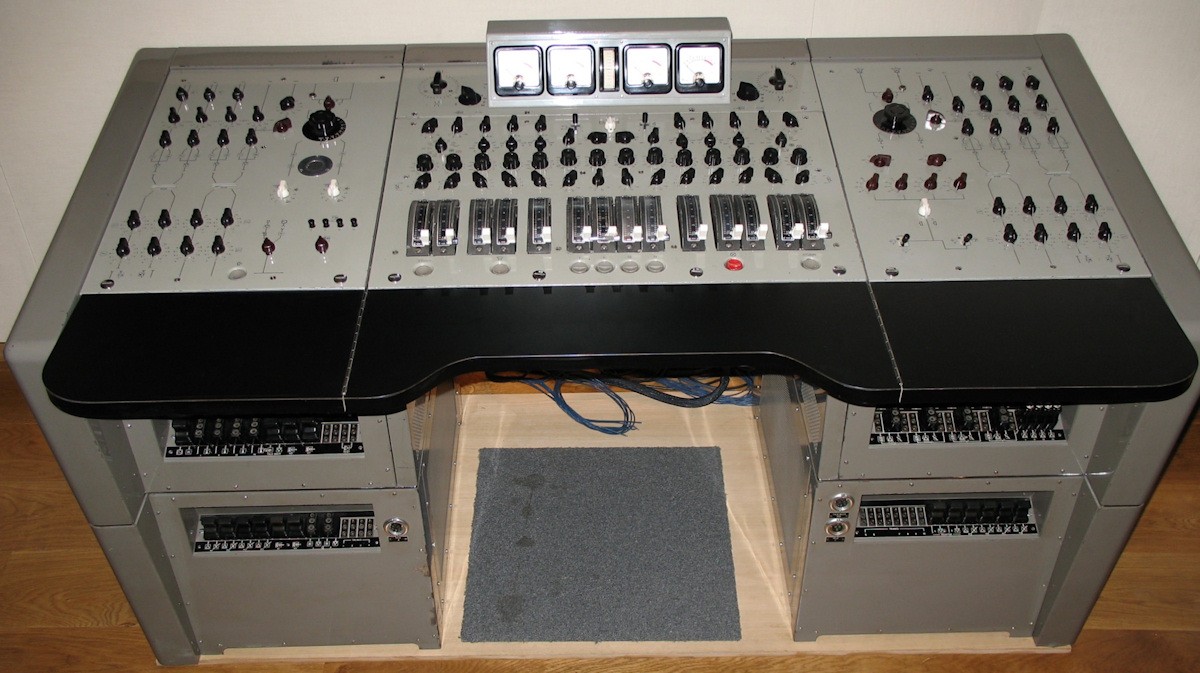Hello, guys! Anybody knows of filtering technique of Rock vocals in 60's..70's+? I mean vocals of Beatles, Blondie, Quatro, ZZTop, LedZep, early AC/DC and similar. What types of filters were used: LPF/HPF/.., secret comb filtering, phase related filtering,..? Wikipedia tells that Mr. Martin used an 'advanced filtering technique' of vocal recording. What is it? It seems Rock vocals were recorded in very narrow range of 800Hz-1.5K and heavely compressed. And early mixers had just 1, 2, 3 knobs of HPF or LPF! Any info, please.
Comments
Martin - and his engineers, like Geoff Emerick and Phil McDonald
Martin - and his engineers, like Geoff Emerick and Phil McDonald, were indeed fans of hpf. They - along with other engineers who followed suite at the time, realized that there wasn't much point in adding frequencies below that which the particular instrument - namely vocals but not limited to just these - could reproduce.
Keep in mind that they were also using some very nice OB processing - Fairchilds, UA's, etc., and common mics used were Telefunkens, Neumanns, AKG's and other hi end condenser, dynamic and ribbon models...and then adding to this quality chain the console electronics.... beefy, warm pres and electronics by manufacturers like API, and well, you've got some serious game.
Many engineers at the time were also innovators of processing. There was a process named "ADT" or, automatic double tracking, that rumor says was invented by the cats at Abbey Road. These guys were very smart, and in many cases, if a particular processor or filter was wanted or needed and not available, they would actually design and build what they needed.
And finally, let us not forget that these guys really knew what they were doing as engineers. ;)
I'm not quite sure I get your question. There's no specific re
I'm not quite sure I get your question.
There's no specific recipe for sounding like somebody else.. You can't transform your voice to sound like an other.
I mean, creating a sound is a lot more complex than what EQ setting I'll use !!
It starts with how the room sound and how the singer's vocal cords actually sound. Then the choice of mic/preamp, wires, recording unit (analog/digital tape or converters/computers). All those steps between the creation of the sound/signal and final cut will change or forge how the vocal track sounds. So no EQ setting will be the same. If it's recorded properly, maybe no EQ will be needed!
The best investment we can do as audio engineer is to train our ears.
Being able to recognize what needs to be done to get the sound we want with the gear at hand is the most important thing. And your ears should be the first tool to use. You can turn knobs all day, but your ears need to recognize when it sounds right!
As for a phase trick try this one :
Put two speaker out of phase, place them in a perfect triangle shape with a mic = good for those allergic to headphones ;)
As stated, HPF is your friend. The top end "softness", and some
As stated, HPF is your friend. The top end "softness", and some of the compression you alluded to, was the result of the medium -tape .
I believe that the bandwidth (800-1.5K) you stated was a bit wider than that, though. Consoles varied a lot, but the EQ was , in most cases, a simpler affair,
with 2 or 3 bands that had a few selectable frequencies each.
Universal Audio has now released the "Abbey Road" emulations of
Universal Audio has now released the "Abbey Road" emulations of some of the 'special' boxes used in their production chains. while this may not get you any closer to what you want to hear, they are examples of the tools used. One of the special things about EMI and Abbey Road was the presence of an on-site engineering staff who could build devices for specific needs. How many secret little filters, limiters, types of compressors, bandwidth dependent thingys they had will always haunt the minds of engineers and producers seeking that sound. The fact that you can only get close, if even that much, is the barrier. The brilliance of ALL of the factors representing the recording and production of Beatles and others from those studios continues to this day. There simply was nothing that sounded like those rooms. Some would point out the negatives of this sound but in reality we were then, as now, listening to the opening salvos of what became modern recording techniques for rock and pop music which continues to this day. Without the ground breaking done there producing the Beatles, who knows where the business would have gone.
As for the EQ used in those days, it was NEVER corrective. It was meant as a musical expression and the fact that the limited amount of EQ found in ANY studios of the time period bears this out. This was when rooms had a distinctive sound and a correct placement of source and mic was essential to fidelity and overall quality.
read this! Lenn Page started EMI's Re
read this!
Lenn Page started EMI's Recording Engineer Development Department (REDD) in 1955. in 1958 they developed the REDD .37 to accommodate 4 track recording.
the .37 was powered exclusively by Siemins V72 tube amps. soon after (within a year) the REDD .51 was introduced which used lower noise REDD .47 amps. Abbey Road acquired their first REDD .51' in 1963. this leaves the question was it a REDD .37 or a REDD .51 which they used for most of their recordings post 1963?
four .51's were built and they were used until 1968 when Abbey Road phased them out in favor of the newer solid state 8 and 16 track TG series consoles. the album "Abbey Road" was recorded using the TG console. Geoff Emrik said he had trouble getting the same tone for Pauls bass using the TG.
the Beatles also recorded at Trident on a Trident A Range and Olympic studios on a Helios board on some recordings they released. They also had two green Helois boards at Apple Studios so it can be said they recorded with Trident and a Helios boards also.
Wikipedia: "While Abbey Road still only used four-track, Trident's Ampex eight-track machine drew The Beatles on 31 July 1968 to record "Hey Jude". (Abbey Road had taken delivery of a 3M eight-track machine earlier in the year, but declared it not yet suitable for use.) The White Album tracks "Dear Prudence", "Honey Pie", "Savoy Truffle" and "Martha My Dear" were also recorded there. On 22 February 1969, The Beatles first recorded "I Want You (She's So Heavy)" for the album Abbey Road. John Lennon and Yoko Ono later returned with The Plastic Ono Band to record "Cold Turkey" featuring Eric Clapton on lead guitar."
Thank you very much for your time and participation! 2DonnyTho
Thank you very much for your time and participation!
2DonnyThompson
Yes, they are a brilliant and gifted engineers.
2pcrecord
allergic to headphones ;))
2moonbaby
'a simpler affair' with 2-3 selectable frequencies. Correct. Today we all know schematics, tubes were used, filters frequencies, mics, compressors - but that isn't enough to sit vocals in very narrow frequency range and not to get phone box sounding( They do sound like a big vocals without 'phone' fx.
2Davedog
In-house engineering was a strong side of EMI. ' it was NEVER corrective' - great point.
2Kurt Foster
! Thanks for a link and beautiful images of Golden Age beasts.
I've checked some vocal regions.
'Can't Buy Me Love' 1k-3.5K
'Drive My Car' - vocs are very narrow sitting in 1k-2.8k band.
Interesting that sound has its breath, basses and even clear sibilants! I assume they got worldwide famous due to wide playability - up to a tiny 1cm speaker radio)
What engineers had used to create such Hi-Mid Boosted Overcompressed regions in those far days? I think of:
- phase cancelation between mics + compression
- HPF+LPF + compression
- BPF into sidechain (?? No)
- AUX to compressors + filters?
Thanks again!
Check these links. [[url=http://[/URL]="http://oldies.about.co
Check these links.
[[url=http://[/URL]="http://oldies.about…"]Drive My Car[/]="http://oldies.about…"]Drive My Car[/]
[="http://oldies.about…"]
Can't Buy Me Love[/]
there really wasn't a lot of trickery when it came to the early Beatle recordings. standard fare was Fairchild and Altec limiters (usually modified by EMI engineers) Pultek EQs, tape delay and specially designed rooms used as echo chambers. (Paul & John would sneak into the Echo chambers to smoke dope and they would be startled when someone would patch in the echo and music would suddenly start blasting out).
first the tape machines in use at Abbey Road (Europe) were equalized to IEC instead of NAB (US) curves. some say the IEC curve yields a lower noise level ...
even though there were a few 8 tracks in existence, in those days 4 track recorders were still considered state of the art. they would start usually by recording the drums and rhythm guitars (rhythm tracks with all playing live) and then over dub solos and other bits. if the 4 track tape was filled up they would do a bounce to a second four track mixing the first four down to one or two tracks and then continuing on with the remaining open tracks. sometimes if the snare got lost in the bounces they would have Ringo smack a seat cushion on a chair to bring out a little more attack on the 2 beat. this is how everyone did it in those days. the final things to be overdubbed were the vocals and harmonies and always last, the bass recorded as a first generation pass as it was subject to the effect of head bump and generational distortion. this is part of the reason McCartneys bass parts were so melodic. because he had last stab at it he was afforded the opportunity to fill in any gaps.
from Wikipedea
"As early as the 1950s, it was discovered that double tracking the lead vocal in a song gave it a fuller, more appealing sound, especially for singers with weak or light voices. Use of this technique became possible with the advent of magnetic tape for use in sound recording. Originally, a pair of single-track (or "mono") tape recorders were used to produce the effect; later, multitrack tape machines were used. Early pioneers of this technique were Les Paul and Buddy Holly. Before the development of ADT, it was necessary to either record the vocal track twice on two different tracks of a multitrack tape, or to record the vocal first on one tape, then again on a second tape while simultaneously copying the first to the second—a process that could be both tedious and exacting, and might require several takes. After the development of ADT, this process became known as "manual double tracking"...... "
at some point a year or two into the Beatles recording careers Ken Townsend at EMI / Abbey road figured out a way using another two track machine how they could get a double tracking effect.
from Wikipedea
" .... Townsend came up with a system using tape delay, after similar principles already in place for echoes applied via tape during a song mixdown. In essence, Townsend's system added a second tape recorder to the regular setup. When mixing a song, its vocal track was routed from the recording head of the multitrack tape, which was before the playback head, and fed to the record head of the second tape recorder. An oscillator was used to vary the speed of the second machine, providing more or less delay depending on how fast or slow the second machine was run relative to the first. This signal was then routed from the playback head of the second machine to a separate fader on the mixer. This allowed the delayed vocal to be combined with the normal vocal, creating the double tracked effect."
so a lot of what you are hearing is ADT and tape compression from repeated bounces from one machine to another. this is a sound that became lost as recording studios moved on to multitracks with 8 / 16 and 24 tracks. Rolling Stones guitarist Kieth Richards in an interview in the mid 80's said he thought that mono recordings done on 4 track sounded better, saying the sound of the tape compression and generation loss added something. he called it, "The sound of Rock & Roll".
Great info on subj ) 'One of the absolutely vital components of
Great info on subj )
'One of the absolutely vital components of Abbey Road’s echo chamber sound was the RS106 (passive) filter used before the chamber. The RS106 was a simple filter known as a “bandpass” filter. It was by no means a revolutionary design, and, for decades, laboratories around the world had been using similar filters. At Abbey Road (as at many other studios), the engineers had discovered that filtering the signal before it entered the chamber helped to improve the sound.'
'There were seven RS106 filters in the Echo Racks: three to be used for chamber sends, plus four spare units.'
Details are here: [[url=http://[/URL]="http://www.echotapp…"]Recording the Shadows | Echotapper[/]="http://www.echotapp…"]Recording the Shadows | Echotapper[/]
'The most commonly used frequency setting as Send was Bass Cut 600 Hz and Top Cut 10 kHz'










roll off anything below 100Hz. hpf it.
roll off anything below 100Hz. hpf it.